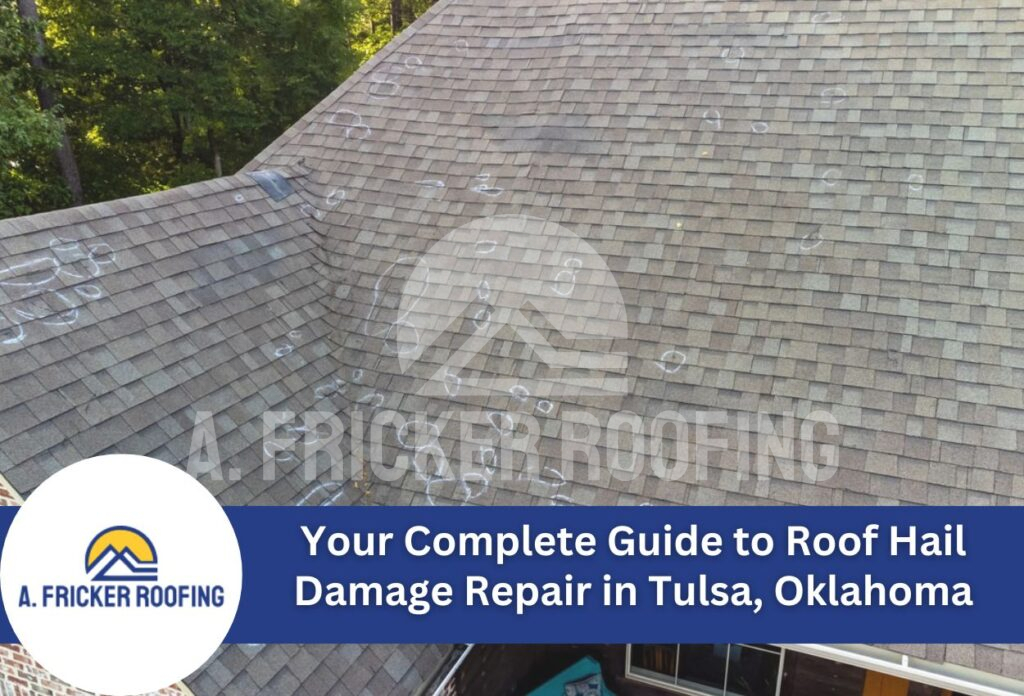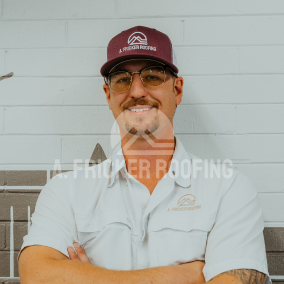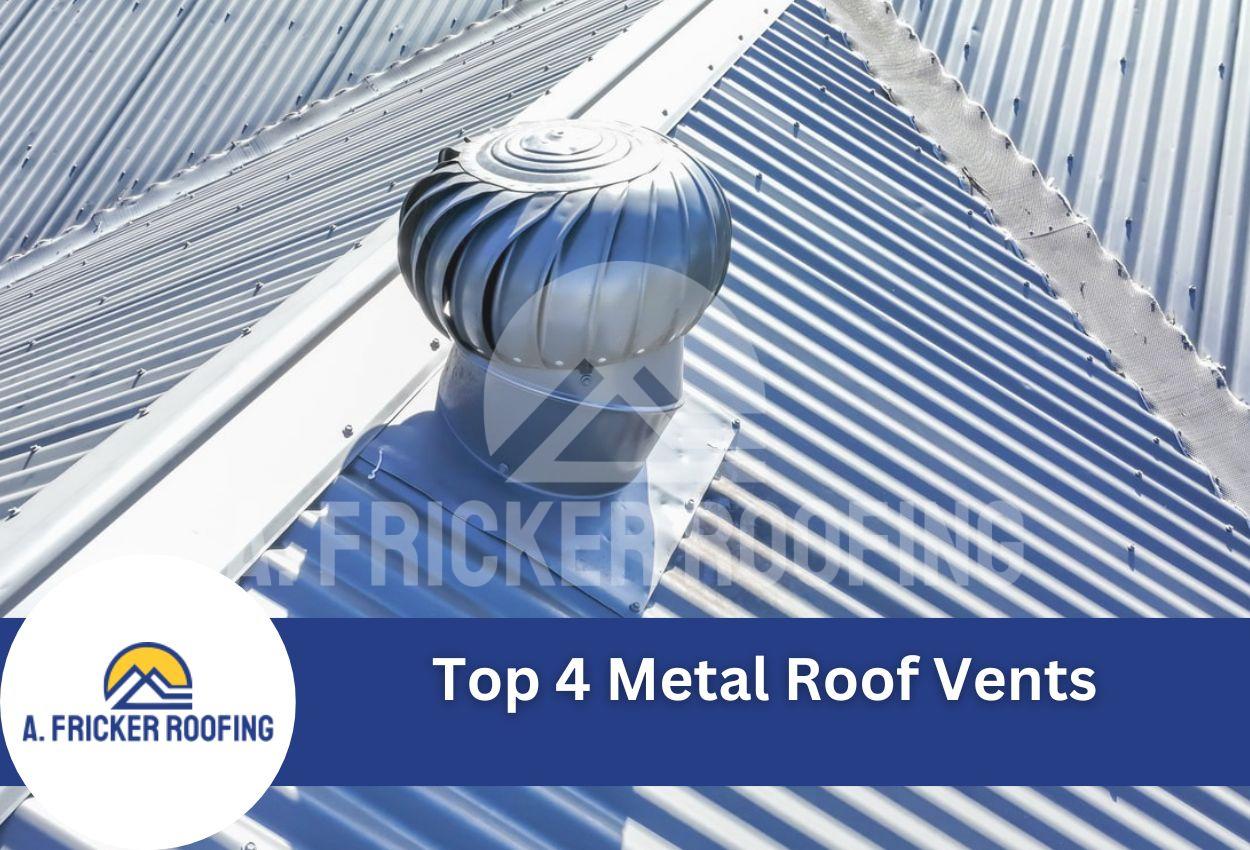Your Complete Guide to Roof Hail Damage Repair in Tulsa, Oklahoma

Hailstorms strike Tulsa frequently and devastating force, leaving homeowners scrambling to assess and repair extensive roof damage. These severe weather events can transform a perfectly intact roof into a compromised structure within minutes, creating urgent safety concerns and potential water infiltration issues that need immediate attention.
Roof hail damage in Tulsa requires swift action to prevent secondary problems like interior water damage, mold growth, and structural deterioration. The impact from hailstones creates punctures, cracks, and granule loss on shingles, while also damaging gutters, flashing, and other roofing components. Understanding the critical steps following a hailstorm can save homeowners thousands of dollars in additional repairs.
A professional hail damage roof inspection is essential after any significant storm. Trained storm damage roofing contractors can identify subtle damage that untrained eyes often miss, including compromised shingle integrity and weakened roof systems. This thorough assessment can be helpful when filing an insurance claim for roof damage, as documentation and professional evaluation strengthen the claim process.
Emergency roof repair services provide immediate protection when damage threatens the home’s interior, while complete replacement may become necessary for severely compromised roofing systems. No matter the extent of the damage, taking prompt action protects both the property and your family’s safety.
Recognizing Signs Your Roof Has Sustained Hail Damage
Identifying hail damage requires carefully examining both the outside and inside of the home. Many homeowners can spot obvious exterior damage from ground level without climbing onto the roof. Missing or cracked shingles are the most visible indicators of hail impact, often appearing as scattered bare spots across the roof surface. Dented gutters and downspouts frequently show circular impressions where hailstones struck, while damaged siding may display similar impact marks or cracks.
Damage inside the home is often the first indicator that the roof is compromised. Water stains on ceilings or walls suggest that damaged shingles are allowing moisture in. Wet or damaged insulation in the attic indicates active leaks that require immediate attention from emergency roofing services. Homeowners should also check for light visible through the roof boards when standing in a dark attic.
A professional hail damage roof inspection reveals subtle damage that may not be immediately apparent. Granule loss on asphalt shingles, exposed mat or fiberglass backing, and loose or missing flashing around chimneys and vents often require trained expertise to identify properly. Storm damage roofing contractors use specialized techniques to assess the full extent of the damage, which is critical when documenting conditions for an insurance claim and determining whether a roof replacement after hail is necessary.
The Professional Inspection Process and What to Expect
Certified roofing contractors use specialized equipment and techniques to conduct thorough hail damage roof inspections. These professionals begin their assessment with advanced moisture meters that identify water damage invisible to the naked eye. Digital cameras with macro lenses capture detailed images of granule loss, cracked shingles, and damaged flashing for comprehensive documentation. Storm damage roofing contractors may also use drone technology to safely examine steep or dangerous roof sections while providing clear aerial perspectives of the damage.
The inspection process includes careful examination of all roofing components, from shingles and underlayment to gutters, vents, and chimney flashing. Contractors measure hailstone impact marks, document exposed mat areas on damaged shingles, and assess the structural integrity of decking materials. This approach ensures no damaged areas go unnoticed during the evaluation process.
Obtaining multiple professional inspections provides valuable second opinions and strengthens documentation for insurance purposes. Different contractors may identify varying degrees of damage or recommend different repair approaches, giving homeowners a comprehensive understanding of their roof’s condition. Detailed inspection reports include photographs, measurements, and professional assessments that are essential when filing an insurance claim for roof damage. These documents help insurance adjusters understand the scope of the work needed and support decisions regarding emergency repairs or complete roof replacement.
Working with Insurance Companies for Hail Damage Claims
Filing an insurance claim for roof damage requires specific documentation and adherence to strict timelines. Homeowners should contact their insurance company immediately after discovering hail damage, as most policies require prompt notification of storm-related incidents. The initial claim filing typically involves providing basic information about the storm date, damage location, and preliminary assessment of affected areas. Insurance companies usually assign claim numbers within 24 to 48 hours and schedule adjuster visits within several days of the initial report.
Required documentation includes detailed photographs of all damaged areas, receipts for any emergency roof repair services, and professional inspection reports from certified storm damage roofing contractors. Homeowners should also document interior damage, compromised gutters, and any temporary protective measures taken to prevent further deterioration. Weather reports confirming hail activity in the area strengthen claims and help establish a timeline of when the damage occurred.
Experienced roofing contractors can also assist homeowners throughout the claim process.
They have knowledge of local building codes and material requirements that help create accurate repair estimates, while their experience with roof replacements guides homeowners through complex coverage decisions and helps secure appropriate settlement amounts.
Repair Options and When Replacement Becomes Necessary
Minor hail damage often responds well to targeted repair methods that restore roof integrity without requiring complete replacement. Spot shingle replacement addresses isolated damage where individual shingles have sustained cracks or punctures. This repair method typically takes a day or two to be completed and is most effective when damage affects a small portion of the total roof area. Sealants can repair small punctures, loose materials, and exposed nail heads.
Moderate damage may require partial roof section replacement, where storm damage roofing contractors remove and replace entire damaged areas while preserving intact sections. This approach works well when hail damage concentrates in specific zones, such as south-facing slopes that bear the brunt of storm impact. Flashing replacement and gutter repairs often accompany these moderate repair projects, with project timelines extending to a few days depending on weather conditions and material availability.
A full roof replacement is necessary when damage compromises more than 30% of the roofing system or when multiple layers require replacement. Widespread granule loss, extensive shingle cracking, and compromised underlayment indicate that repairs would be more expensive than complete replacement. Complete roof replacement projects require multiple days or a week, depending on home size and complexity, but provide long-term protection that scattered repairs cannot match.
Choosing the Right Storm Damage Contractor in Tulsa
Selecting a qualified storm damage roofing contractor requires reviewing their credentials and professional qualifications. Licensed contractors must carry current Oklahoma state licensing and insurance coverage, including both liability and workers’ compensation policies. Reputable contractors provide proof of bonding and maintain established local business addresses with verifiable phone numbers and physical locations. Local reputation serves as a strong indicator of quality work, as established contractors maintain relationships with suppliers, building departments, and other companies throughout the Tulsa area.
Experienced contractors demonstrate their expertise through manufacturer certifications, Better Business Bureau ratings, and positive customer reviews spanning multiple years. Professional storm damage roofing contractors provide detailed written estimates, maintain clean work sites, and follow safety protocols during hail damage roof inspection and repairs. They should readily provide local references from recent hail damage projects and demonstrate familiarity with local building codes and permit requirements.
Homeowners must avoid several warning signs that indicate potentially problematic contractors. Door-to-door solicitors who appear immediately after storms often lack proper licensing or insurance coverage. Contractors demanding large upfront payments, offering significant discounts for signing immediately, or claiming they can waive insurance deductibles typically engage in fraudulent practices. Legitimate emergency roof repair services provide reasonable payment terms and never pressure homeowners into hasty decisions regarding roof replacement, instead allowing time for proper insurance claim processing and multiple estimate comparisons.
Emergency Services and Preventing Further Damage
When hail damage compromises a roof’s protective barrier, homeowners must take immediate action to prevent water intrusion and additional structural damage. Covering damaged areas with waterproof tarps provides temporary protection until professional repairs begin. Homeowners should secure tarps with wooden boards and screws rather than nails, which can create additional puncture points. Removing standing water from gutters and clearing debris from roof surfaces helps prevent ice dams and reduces stress on already compromised structures.
Interior protection measures include moving valuables away from damaged areas and placing buckets or containers to catch dripping water. Homeowners should avoid walking on damaged roofs, as hail impact often weakens shingle adhesion and underlying decking materials. Photos of both temporary protective measures and progressive damage help support insurance claims and provide evidence of proactive damage prevention efforts.
Emergency roof repair services become essential when active leaks threaten interior spaces or when structural integrity appears compromised. Storm damage roofing contractors provide 24-hour emergency response for critical situations, offering temporary weatherproofing solutions, including professional-grade tarps and emergency patching materials. These services prevent secondary water damage that can exceed original hail repair expenses. Professional emergency teams also assess whether an immediate roof replacement after hail damage is necessary for safety reasons, providing expert guidance during stressful situations when quick decisions are crucial for protecting your property.
Protect Your Home with Expert Roof Hail Damage Repair in Tulsa
If your home in Tulsa has recently experienced hail damage, don’t wait for the problem to worsen. Act now to protect your investment with A. Fricker Roofing and Waterproofing, your trusted local experts in roof hail damage repair. We specialize in swiftly assessing and repairing hail damage to ensure your home remains safe and secure. Our team of certified professionals uses the latest techniques and tools to deliver high-quality repairs tailored to the unique needs of your roof.
Call A. Fricker Roofing and Waterproofing today at (918) 402-7167 to schedule a comprehensive hail damage inspection and repair service. We’re here to help you navigate the repair process smoothly and efficiently, from initial inspection to final repairs. Contact us today and secure your home against the elements.



